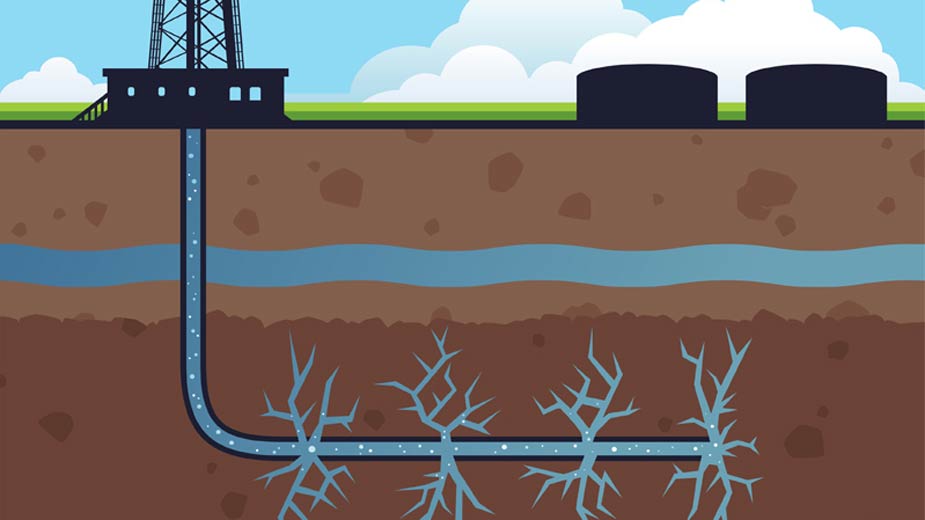Report: Appalachia’s Natural Gas Counties Suffered as Production Boomed
JOHNSTOWN, Pa. – The natural gas boom in the Marcellus and Utica fields, which promised to deliver growth in jobs, income and population to 22 counties in Ohio, Pennsylvania and West Virginia, actually is a bust, finds a new report by the Ohio River Valley Institute.
The report is titled “Appalachia’s Natural Gas Counties: Contributing more to the U.S. economy and getting less in return.”
The Ohio River Valley Institute is an independent research center that “produces data-driven research and proposes policies … with a focus on shared prosperity, clean energy, and equitable democracy,” according to its website.
Mahoning, Trumbull and Columbiana counties are not among the 22 counties studied in the report, nor does the report include Mercer and Lawrence counties in Pennsylvania.
The counties that are included cover the upper Ohio River Valley and northeastern Pennsylvania. “[They] are responsible for over 90% of all the gas produced in Appalachia. These counties, which we’ll call ‘Frackalachia,’ represent just 10% of the land area of the three states and are home to less than 4%of the population,” the study states.

In releasing the results, the institute begins by noting economic impact studies from a decade ago that predicted 450,000 jobs would result from natural gas production in the region. Instead, the report states, “data from the U.S. Bureau of Economic Analysis show that jobs in the 22 counties crept up by a paltry 1.7%, while nationally the number of jobs grew by 10%.”
At the same time, the report finds, “economic output in the 22 counties grew by 60%, more than three times the rate of output growth nationally. Between 2008 and 2019, as the counties’ contribution to the nation’s economy grew from $2.46 per thousand dollars of output to $3.31, their piece of the national economic pie got smaller.”
In the 22 counties, according to the report:
- Personal income fell by 6.3%, from $2.62 for every $1,000 to $2.46.
- Their share jobs fell by 7.5%, from 2.8 in every 1,000 to 2.6.
- Their share of the nation’s population fell by 9.6%, from 3.2 for every 1,000 Americans to 2.9 for every thousand.
Ohio’s seven eastern counties – Belmont, Carroll Guernsey, Harrison, Jefferson, Monroe, and Noble – were the hardest hit, seeing a net job loss of over 8% and a population loss of over 3%.
Pennsylvania’s eight primary gas-producing counties – Bradford, Greene, Lycoming, Sullivan, Susquehanna, Tioga, Washington, and Wyoming – did better with a net 4.5% gain in jobs, although that was slightly less than the statewide average gain of 4.6%. And it did not prevent a population decline of 1.4%.
Only in West Virginia did the natural gas counties – Doddridge, Harrison, Marshall, Ohio, Ritchie, Tyler, and Wetzel – outperform the state for personal income and jobs. But even then, the rate of growth was less than half the national average and the population loss was greater than the population loss in the state as a whole.
“What’s really disturbing is that these disappointing results came about at a time when the region’s natural gas industry was operating at full capacity,” says Sean O’Leary, the report’s principal author. “So it’s hard to imagine a scenario in which the results would be better. If nothing else does, that fact alone should persuade the region’s policymakers that they need to explore other, more sustainable economic development opportunities.”
Adds Joanne Kilgour, executive director of the Ohio River Valley Institute, “It’s disappointing that this report was necessary to open peoples’ eyes to the realities of the economic impacts of the natural gas boom because you only have to look at what has happened to the downtowns in Bellaire, Steubenville, Wheeling and Waynesburg to know that jobs and incomes haven’t been growing.”
CLICK HERE to download the full report.
Published by The Business Journal, Youngstown, Ohio.



